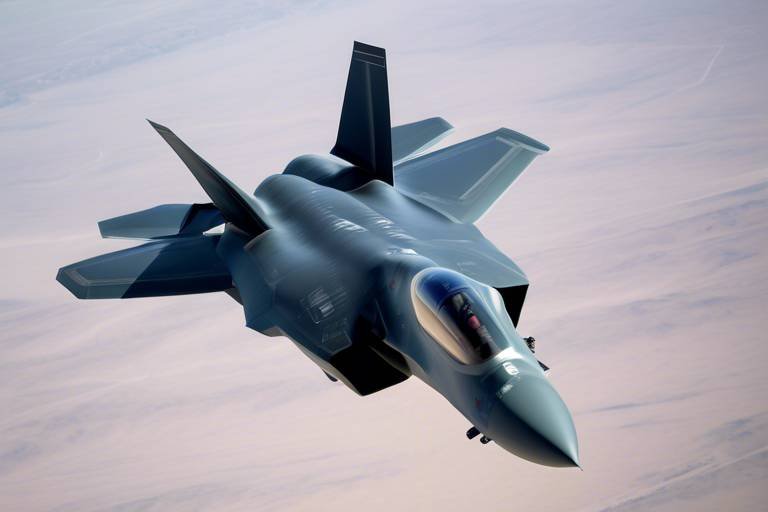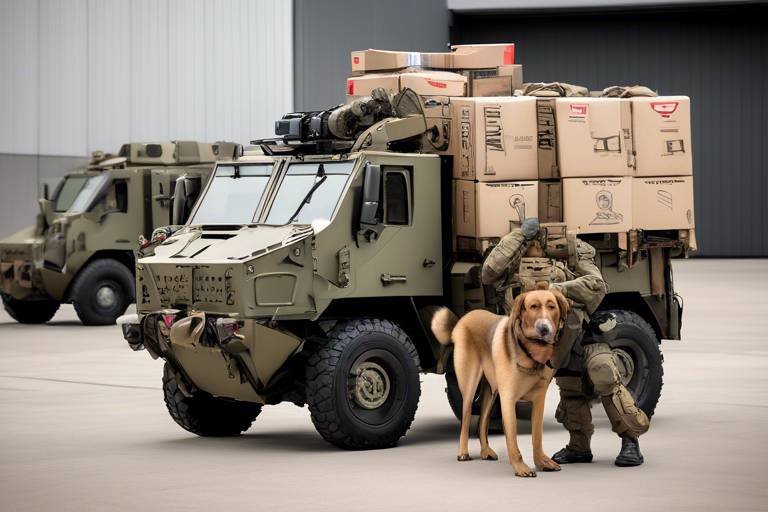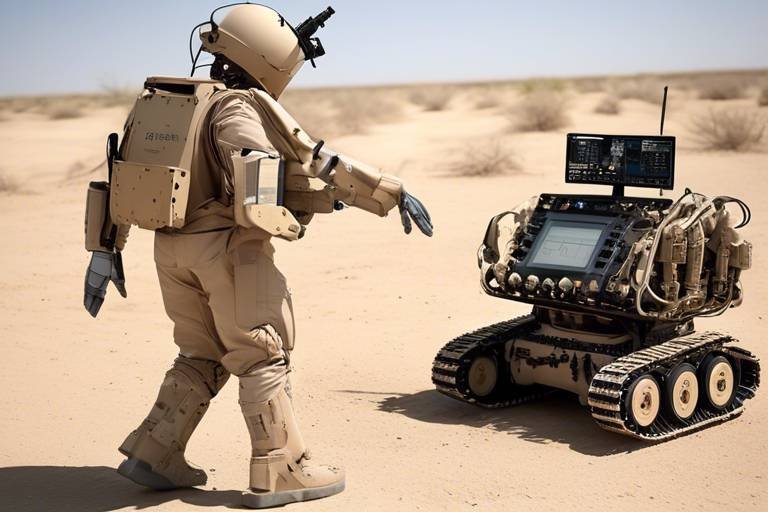The Role of the MQ-1C Gray Eagle in Counterinsurgency Operations
The MQ-1C Gray Eagle drone has emerged as a pivotal asset in the realm of counterinsurgency operations, a game-changer that redefines how modern warfare is conducted. With its ability to operate in diverse environments, the Gray Eagle not only provides real-time intelligence but also enhances the overall effectiveness of military operations. Imagine having a bird’s-eye view of a battlefield, where every movement is monitored and analyzed, allowing commanders to make informed decisions at a moment’s notice. This is precisely what the Gray Eagle offers, making it an indispensable tool in the fight against insurgency.
Equipped with cutting-edge technology, the Gray Eagle is not just another unmanned aerial vehicle (UAV); it represents the future of aerial warfare. It boasts sophisticated sensors and communication systems that allow it to gather critical data, which is then relayed back to command centers for immediate analysis. The implications of such capabilities are profound, as they enable military forces to respond to threats with unprecedented speed and precision.
As we delve deeper into the specifics of the MQ-1C Gray Eagle, we will uncover the various features that make it a formidable opponent on the battlefield. From its advanced ISR (Intelligence, Surveillance, and Reconnaissance) capabilities to its robust weapon systems, each element plays a vital role in counterinsurgency missions. The synergy of these components not only enhances situational awareness but also significantly increases the safety of ground troops, allowing them to operate with a greater degree of confidence.
In this article, we will explore the operational advantages the Gray Eagle offers, the challenges it faces, and what the future may hold for this extraordinary UAV. The world of military operations is evolving, and the Gray Eagle is at the forefront of this transformation, representing a shift towards more strategic and effective approaches to combatting insurgency.
The MQ-1C Gray Eagle is an advanced unmanned aerial vehicle (UAV) designed specifically for intelligence, surveillance, and reconnaissance (ISR) missions. This powerful drone is not just a tool; it's a force multiplier that enhances the capabilities of ground forces. With a wingspan of 56 feet and the ability to fly at altitudes of up to 29,000 feet, the Gray Eagle can stay airborne for over 24 hours, making it ideal for prolonged missions in hostile territories.
One of the standout features of the Gray Eagle is its payload capacity, which allows it to carry a variety of sensors and munitions. This flexibility enables operators to tailor the drone's capabilities to specific mission requirements, whether it's gathering intelligence or engaging targets. Moreover, its advanced navigation systems and autonomous flight capabilities reduce the operational burden on pilots, allowing them to focus on strategic decision-making rather than merely flying the aircraft.
The Gray Eagle is equipped with cutting-edge technologies that enhance its operational effectiveness. From high-resolution cameras to sophisticated communication systems, these features are vital for successful counterinsurgency missions. The drone's ability to collect and transmit data in real-time allows for informed decision-making, ensuring that military leaders have the information they need to act swiftly and effectively.
The ISR capabilities of the Gray Eagle allow for real-time data collection and analysis. Imagine being able to monitor enemy movements, identify potential threats, and gather intelligence without putting troops at risk. This is the power of the Gray Eagle, which provides a continuous flow of critical information to commanders on the ground.
The advanced sensor systems on the Gray Eagle provide high-resolution imagery and target tracking. Equipped with electro-optical and infrared sensors, the drone can detect heat signatures and monitor activities even in challenging weather conditions. This capability is crucial for identifying insurgent hideouts and planning effective operations.
Robust data link and communication technologies enable seamless information sharing. The Gray Eagle's ability to communicate with ground troops and command centers ensures that everyone is on the same page, facilitating coordinated efforts that can make the difference between success and failure in combat situations.
The Gray Eagle's weapon systems play a crucial role in counterinsurgency operations. With the capability to deploy Hellfire missiles and other precision munitions, the drone can engage targets from a safe distance, reducing the risk to ground forces. This tactical advantage allows for more strategic engagement in asymmetric warfare, where traditional military tactics may fall short.
The deployment of the MQ-1C Gray Eagle offers several operational advantages in counterinsurgency scenarios. Its capabilities contribute to mission success and troop safety, making it a valuable asset in modern military operations.
The Gray Eagle acts as a force multiplier by providing enhanced situational awareness. Its presence can change the dynamics of ground operations, allowing commanders to make more informed decisions and deploy troops more effectively. This advantage can lead to quicker victories and reduced casualties.
By conducting surveillance and airstrikes remotely, the Gray Eagle reduces risks for ground forces. This capability allows troops to engage targets without exposing themselves to enemy fire, ultimately leading to safer engagements in hostile environments.
Despite its advantages, the MQ-1C Gray Eagle faces certain challenges and limitations in counterinsurgency operations. These potential drawbacks must be considered to fully understand the operational landscape.
The Gray Eagle can be susceptible to electronic warfare tactics. Insurgents may employ jamming or other countermeasures to disrupt its operations, which could compromise mission success. Understanding these vulnerabilities is essential for effective mission planning.
The operational costs and maintenance requirements of the Gray Eagle are significant. Budget constraints can limit the number of drones available for deployment, impacting overall mission effectiveness. Evaluating the financial implications of deploying this UAV in counterinsurgency missions is crucial for military planners.
- What is the primary purpose of the MQ-1C Gray Eagle? The primary purpose of the Gray Eagle is to conduct intelligence, surveillance, and reconnaissance missions while providing support for ground troops.
- How does the Gray Eagle enhance troop safety? By conducting surveillance and airstrikes remotely, the Gray Eagle minimizes the exposure of ground forces to enemy fire.
- What types of weaponry can the Gray Eagle deploy? The Gray Eagle can deploy Hellfire missiles and other precision munitions, allowing for targeted strikes against insurgent positions.
- What are the main challenges faced by the Gray Eagle? The main challenges include vulnerability to electronic warfare and significant operational costs and maintenance requirements.

Overview of the MQ-1C Gray Eagle
This article explores the significant contributions of the MQ-1C Gray Eagle drone in counterinsurgency operations, highlighting its capabilities, strategic advantages, and implications for modern warfare.
The MQ-1C Gray Eagle is not just another drone; it represents a leap forward in the realm of unmanned aerial vehicles (UAVs). Designed primarily for intelligence, surveillance, and reconnaissance (ISR) missions, the Gray Eagle has become a pivotal asset in modern military operations. With a wingspan of over 56 feet and the ability to fly at altitudes of up to 29,000 feet, this UAV can stay aloft for more than 24 hours, making it a truly formidable presence in the skies.
One of the standout features of the Gray Eagle is its ability to operate in various environments, ranging from urban landscapes to remote terrains. This versatility is crucial for counterinsurgency operations where the battlefield can change dramatically. The UAV is equipped with advanced systems that allow for real-time data collection, which is essential for making informed decisions on the ground. The Gray Eagle's specifications include:
| Specification | Details |
|---|---|
| Wingspan | 56 feet |
| Maximum Altitude | 29,000 feet |
| Endurance | 24 hours |
| Payload Capacity | Up to 800 pounds |
This table highlights just a few of the impressive specifications that make the Gray Eagle a critical tool in military operations. But what truly sets it apart is its integrated sensor suite that provides high-resolution imagery and real-time video feeds. These capabilities allow commanders to monitor enemy movements and assess threats without putting troops in harm's way. Imagine having an eye in the sky that can see everything, while your ground forces remain safely hidden from view!
Moreover, the Gray Eagle is designed to be user-friendly, with an intuitive interface that allows operators to control the UAV with ease. This means that even in high-pressure situations, pilots can focus on the mission rather than grappling with complex technology. The combination of advanced technology and ease of use makes the MQ-1C Gray Eagle a game-changer in counterinsurgency operations.
In summary, the MQ-1C Gray Eagle is a sophisticated UAV that enhances the capabilities of military forces engaged in counterinsurgency efforts. Its impressive specifications, advanced sensor systems, and user-friendly design make it an invaluable asset for gathering intelligence and executing missions with precision.
- What is the primary purpose of the MQ-1C Gray Eagle?
The MQ-1C Gray Eagle is primarily designed for intelligence, surveillance, and reconnaissance (ISR) missions, providing real-time data to support military operations. - How long can the Gray Eagle stay in the air?
The Gray Eagle has an endurance of over 24 hours, allowing it to conduct extended missions without the need for frequent landings. - What are the key advantages of using the Gray Eagle in counterinsurgency?
Its advanced sensors, high-altitude capabilities, and long endurance make it a vital tool for gathering intelligence and ensuring the safety of ground troops.

Key Features and Technologies
The MQ-1C Gray Eagle is not just another drone; it’s a technological marvel that redefines the battlefield dynamics in counterinsurgency operations. At its core, the Gray Eagle is equipped with an array of advanced features and technologies that enhance its operational effectiveness, making it a critical asset for military forces. The combination of sophisticated sensors, robust communication systems, and versatile weaponry allows the Gray Eagle to perform a variety of roles, from intelligence gathering to direct strikes against insurgent targets.
One of the standout features of the Gray Eagle is its intelligence, surveillance, and reconnaissance (ISR) capabilities. With high-resolution cameras and sophisticated sensors, it can monitor vast areas in real-time, providing commanders with actionable intelligence. Imagine having the eyes of a hawk, able to spot threats from miles away, all while remaining undetected. This capability is crucial in counterinsurgency operations where the enemy often blends into the civilian population.
Moreover, the Gray Eagle is equipped with advanced sensor systems that include:
- Electro-Optical/Infrared (EO/IR) cameras for day and night operations
- Synthetic Aperture Radar (SAR) for all-weather surveillance
- Signal Intelligence (SIGINT) capabilities to intercept enemy communications
These sensors not only provide high-resolution imagery but also enable target tracking, ensuring that military personnel can make informed decisions based on real-time data. The integration of these technologies significantly impacts mission success, allowing for precise engagements while minimizing collateral damage.
In addition to its ISR capabilities, the Gray Eagle boasts a robust data link and communication technology suite. This technology ensures that information is shared seamlessly between the UAV, ground troops, and command centers. With secure and reliable communication, the Gray Eagle can relay critical information back to operators, enhancing coordination and situational awareness. It’s akin to having a well-oiled machine where every part works in harmony, resulting in a more effective and efficient operation.
When it comes to weaponry, the Gray Eagle is a powerhouse. It can carry a variety of munitions, including Hellfire missiles and laser-guided bombs, which can be deployed with surgical precision. This capability is particularly important in asymmetric warfare, where the Gray Eagle can engage targets without putting ground troops at risk. The tactical applications of its weapon systems are vast, allowing for quick responses to emerging threats and the ability to conduct strikes from a safe distance.
In summary, the MQ-1C Gray Eagle’s key features and technologies make it an indispensable tool in modern counterinsurgency operations. Its advanced ISR capabilities, robust communication systems, and versatile weaponry work together to create a force multiplier that enhances operational effectiveness and troop safety in the complex landscape of modern warfare.
- What is the primary purpose of the MQ-1C Gray Eagle?
The primary purpose of the MQ-1C Gray Eagle is to conduct intelligence, surveillance, and reconnaissance (ISR) missions, as well as to provide precision strike capabilities in counterinsurgency operations. - How does the Gray Eagle enhance situational awareness?
By utilizing advanced sensors and real-time data transmission, the Gray Eagle provides commanders with up-to-date information about the battlefield, allowing for better decision-making and coordination. - What types of munitions can the Gray Eagle carry?
The Gray Eagle can carry a variety of munitions, including Hellfire missiles and laser-guided bombs, enabling it to engage targets with precision. - Are there any vulnerabilities associated with the Gray Eagle?
Yes, the Gray Eagle can be susceptible to electronic warfare tactics, which may disrupt its communication and operational effectiveness.

Intelligence, Surveillance, and Reconnaissance (ISR) Capabilities
The MQ-1C Gray Eagle is not just another drone; it’s a game-changer in the realm of Intelligence, Surveillance, and Reconnaissance (ISR). Imagine having an eye in the sky that can provide real-time data and insights, transforming the way military operations are conducted. The Gray Eagle is equipped with sophisticated sensors that allow it to gather critical information about enemy movements, terrain, and potential threats. This capability is akin to having a highly trained scout who never sleeps and can cover vast distances without breaking a sweat.
One of the standout features of the Gray Eagle is its ability to conduct persistent surveillance. This means it can loiter over an area for extended periods, providing continuous monitoring of ground activities. The data collected is not just a stream of images; it’s a treasure trove of actionable intelligence. For instance, the drone can detect unusual patterns of activity that might indicate insurgent movements, allowing commanders to make informed decisions quickly. In a world where every second counts, the Gray Eagle’s ISR capabilities can be the difference between success and failure on the battlefield.
Additionally, the integration of advanced sensor systems enhances its effectiveness. The Gray Eagle uses a combination of electro-optical and infrared sensors to capture high-resolution imagery, which is crucial for identifying targets and assessing damage after strikes. The table below summarizes the key ISR technologies utilized by the Gray Eagle:
| Sensor Type | Description | Operational Benefit |
|---|---|---|
| Electro-Optical Sensors | High-resolution cameras for daytime visibility. | Clear imagery for target identification. |
| Infrared Sensors | Thermal imaging for night operations. | Ability to detect heat signatures in darkness. |
| Radar Systems | Ground and air surveillance capabilities. | Real-time tracking of moving targets. |
Moreover, the Gray Eagle's ISR capabilities are enhanced by its data link and communication technologies. These systems ensure that the information gathered is transmitted seamlessly to ground forces and command centers. Imagine being in a high-stakes chess game where every move is crucial; the Gray Eagle serves as the player’s eyes, ensuring that every piece is in the right position. This real-time data sharing fosters better coordination among units, allowing for swift tactical adjustments based on the latest intelligence.
In conclusion, the ISR capabilities of the MQ-1C Gray Eagle are pivotal for modern military operations. They provide a comprehensive view of the battlefield, enabling commanders to make strategic decisions with confidence. As warfare evolves, the importance of such advanced technologies becomes increasingly clear, reinforcing the Gray Eagle's role as an indispensable asset in counterinsurgency operations.
- What is the primary function of the MQ-1C Gray Eagle?
The primary function of the MQ-1C Gray Eagle is to conduct intelligence, surveillance, and reconnaissance missions to support ground operations. - How does the Gray Eagle enhance situational awareness?
By providing real-time data and high-resolution imagery, the Gray Eagle enhances situational awareness for commanders on the ground. - Can the Gray Eagle operate at night?
Yes, the Gray Eagle is equipped with infrared sensors that allow it to conduct surveillance and reconnaissance missions during nighttime. - What are the benefits of using drones like the Gray Eagle in counterinsurgency?
Drones like the Gray Eagle minimize risks to ground forces, provide persistent surveillance, and enhance decision-making through real-time intelligence.
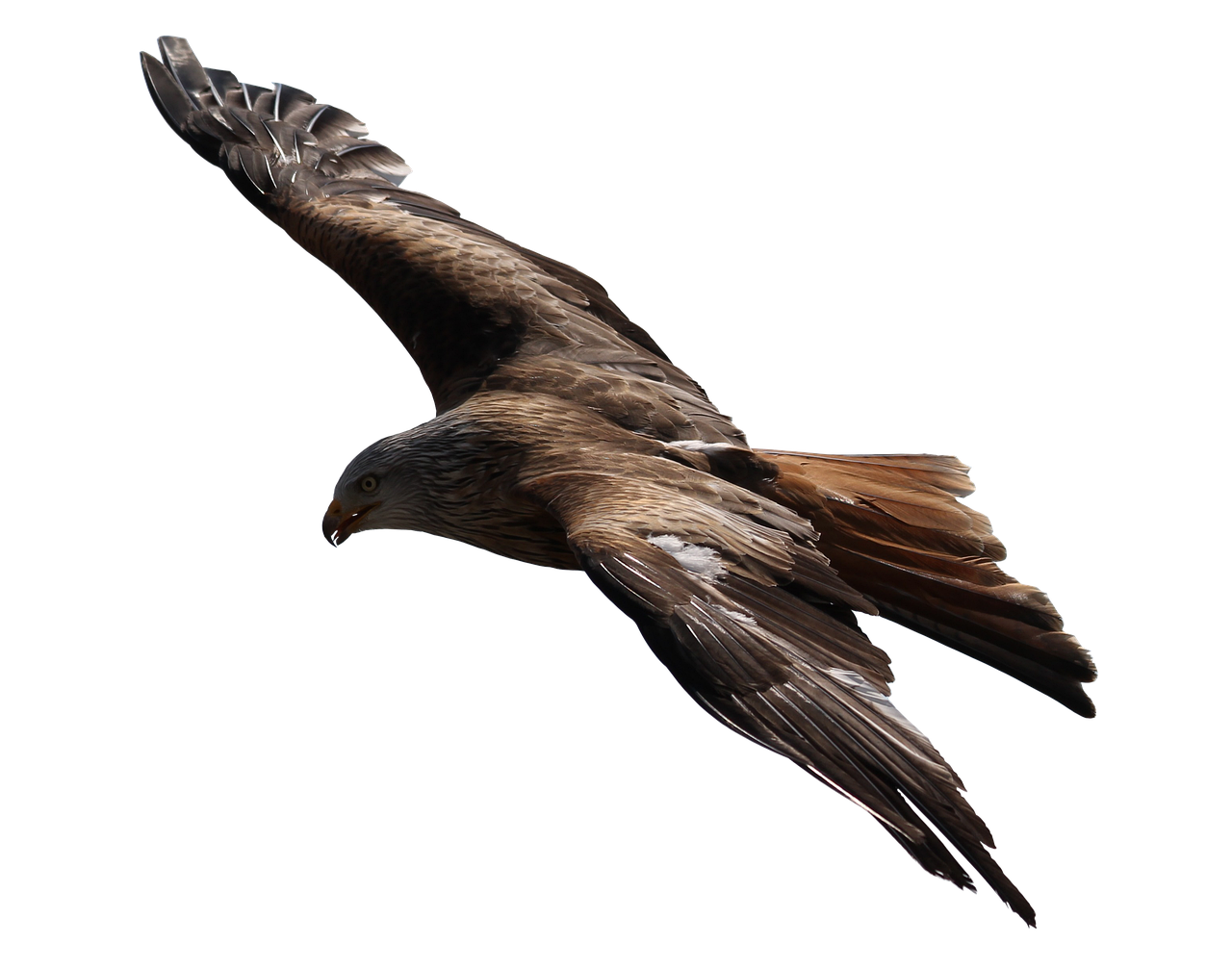
Advanced Sensor Systems
The MQ-1C Gray Eagle is not just any drone; it’s a powerhouse of technology, particularly when it comes to its . These systems are the eyes and ears of the UAV, allowing it to gather critical information from the battlefield in real-time. Imagine being able to see everything happening on the ground from thousands of feet in the air—that’s the kind of advantage the Gray Eagle provides. Its sensors are designed to capture high-resolution imagery, enabling operators to identify targets with remarkable precision. This capability is crucial in counterinsurgency operations, where distinguishing between combatants and civilians can mean the difference between success and failure.
At the heart of the Gray Eagle’s sensor suite are several key technologies:
- Electro-Optical/Infrared (EO/IR) Sensors: These sensors provide clear images both day and night, allowing for effective surveillance in various conditions.
- Multi-Spectral Sensors: Capable of detecting different wavelengths, these sensors enhance target identification and tracking.
- Ground Moving Target Indicator (GMTI): This technology tracks moving targets on the ground, crucial for monitoring insurgent movements.
These sensor systems work in unison to create a comprehensive picture of the battlefield, which is vital for informed decision-making. For instance, the EO/IR sensors allow operators to zoom in on specific areas, providing detailed visuals that can be analyzed on the fly. This capability is essential during operations where time is of the essence, and quick decisions can save lives. The data gathered by these sensors is transmitted back to command centers, where it can be analyzed and acted upon almost instantaneously.
Moreover, the integration of these sensors with advanced data processing systems means that the Gray Eagle can not only collect data but also analyze it in real-time. This capability enables it to identify patterns and anomalies that might go unnoticed by human observers. It’s like having a super-intelligent assistant that never sleeps, constantly scanning for threats and opportunities.
In summary, the of the MQ-1C Gray Eagle are a game-changer in counterinsurgency operations. They provide unparalleled situational awareness, allowing military leaders to make well-informed decisions that can significantly enhance mission success rates. As technology continues to evolve, the capabilities of these sensors will only improve, further solidifying the Gray Eagle's role as a critical asset in modern warfare.
- What types of sensors does the MQ-1C Gray Eagle use? The Gray Eagle is equipped with electro-optical/infrared (EO/IR) sensors, multi-spectral sensors, and ground moving target indicator (GMTI) systems.
- How does the Gray Eagle enhance situational awareness? Its advanced sensor systems provide real-time data collection and high-resolution imagery, allowing for informed decision-making on the battlefield.
- Can the Gray Eagle operate at night? Yes, the EO/IR sensors enable the Gray Eagle to conduct surveillance and reconnaissance missions in low-light conditions.

Data Link and Communication Technologies
The MQ-1C Gray Eagle is not just a flying machine; it’s a sophisticated hub of information that thrives on robust . These systems are essential for ensuring that the UAV can operate effectively in dynamic combat environments. Imagine being able to send and receive critical data in real-time while soaring high above the battlefield. This capability is what sets the Gray Eagle apart from many other unmanned systems.
At the heart of its communication prowess is the multi-band data link, which enables the Gray Eagle to transmit high-definition video and sensor data to ground control stations and other units in the field. This technology allows for seamless coordination and situational awareness, giving commanders the ability to make informed decisions in the heat of battle. The data link operates across various frequencies, enhancing its resilience against potential jamming or interference.
Moreover, the Gray Eagle employs secure communications protocols to protect sensitive data from interception. This is crucial in modern warfare, where information security can mean the difference between mission success and catastrophic failure. The UAV can relay information to multiple users simultaneously, ensuring that both ground troops and command centers are on the same page. This capability is particularly beneficial in counterinsurgency operations, where the speed of information can significantly impact tactical decisions.
To illustrate the effectiveness of these technologies, consider the following table that outlines the key features of the Gray Eagle's communication systems:
| Feature | Description |
|---|---|
| Multi-band Data Link | Supports multiple frequency bands for enhanced communication reliability. |
| Real-time Video Transmission | Delivers high-definition video feeds to ground control for immediate analysis. |
| Secure Communication Protocols | Utilizes encryption to protect data from interception. |
| Multi-user Capability | Allows simultaneous data sharing with various ground units and command centers. |
In addition to these features, the Gray Eagle’s communication systems enable network-centric operations. This means that the UAV can integrate with other platforms, such as manned aircraft and ground vehicles, to create a comprehensive battlefield picture. This level of integration is vital in counterinsurgency operations where the enemy can be elusive and unpredictable. By sharing data across platforms, military forces can enhance their operational effectiveness and respond more swiftly to emerging threats.
Ultimately, the data link and communication technologies of the MQ-1C Gray Eagle are not just technical enhancements; they are a fundamental aspect of how modern warfare is conducted. As conflicts evolve, the ability to communicate and share information in real-time becomes increasingly important. The Gray Eagle's advanced systems ensure that it remains a vital asset on the battlefield, providing troops with the information they need to succeed while minimizing risks.
- What is the primary function of the MQ-1C Gray Eagle?
The MQ-1C Gray Eagle is primarily designed for intelligence, surveillance, and reconnaissance (ISR) missions, providing real-time data to support military operations. - How does the Gray Eagle enhance situational awareness?
By utilizing advanced data link and communication technologies, the Gray Eagle transmits high-definition video and sensor data to ground units, improving situational awareness on the battlefield. - What types of munitions can the Gray Eagle deploy?
The Gray Eagle can carry a variety of munitions, including Hellfire missiles, which are crucial for engaging targets in counterinsurgency operations. - Are there any vulnerabilities associated with the Gray Eagle?
Yes, the Gray Eagle may be susceptible to electronic warfare tactics, which can interfere with its communication and operational capabilities.

Weapon Systems and Engagement Strategies
The MQ-1C Gray Eagle is not just a flying eye in the sky; it's a formidable force equipped with an array of advanced weapon systems that play a pivotal role in counterinsurgency operations. Imagine having the ability to observe enemy movements and, at the same time, strike with precision when necessary. This dual capability is what sets the Gray Eagle apart from conventional warfare tactics. It’s like having a hawk that can both scout the environment and swoop down to catch its prey in one fluid motion.
At the heart of the Gray Eagle's weapon systems are its Hellfire missiles and 30mm cannon. These munitions are designed to engage a variety of targets, from soft-skinned vehicles to fortified positions. The Hellfire missile, in particular, is renowned for its accuracy and lethality. It can be launched from a distance, allowing operators to maintain a safe distance while effectively neutralizing threats. This is crucial in counterinsurgency scenarios where the enemy often blends into civilian populations, making it essential to minimize collateral damage.
Furthermore, the Gray Eagle's engagement strategies are not solely reliant on brute force. The drone employs a strategy of precision strikes and intelligence-driven operations. By integrating real-time intelligence gathered from its advanced sensor systems, the Gray Eagle can make informed decisions about when and where to strike. This intelligence-driven approach not only enhances the effectiveness of its strikes but also helps in building trust with local populations, as the risk of civilian casualties is significantly reduced.
To illustrate the variety of weapon systems available, consider the following table that outlines some of the key munitions the Gray Eagle can deploy:
| Weapon System | Type | Effective Range | Target Type |
|---|---|---|---|
| AGM-114 Hellfire | Air-to-Ground Missile | Up to 8 km | Vehicles, Structures |
| 30mm Cannon | Chain Gun | Effective up to 1,500 m | Personnel, Light Vehicles |
| GBU-44/B Viper Strike | Guided Bomb | Up to 5 km | Precision Targets |
In addition to its weaponry, the Gray Eagle employs sophisticated engagement strategies that revolve around asymmetric warfare. This means that instead of facing the enemy head-on, the Gray Eagle utilizes its strengths to outmaneuver and outsmart them. For example, it can conduct surveillance missions to gather intelligence on insurgent movements, followed by targeted strikes based on the information collected. This layered approach not only maximizes the impact of each engagement but also minimizes the risk to ground troops, effectively redefining the battlefield dynamics.
Moreover, the Gray Eagle's ability to operate in joint operations with ground forces further amplifies its effectiveness. By providing real-time support and coordination, the drone ensures that ground troops are never left in the dark. It’s akin to having a trusted advisor who not only provides insights but also has the power to act decisively when the moment calls for it. This synergy between aerial and ground forces is crucial in counterinsurgency operations, where information and timing can mean the difference between mission success and failure.
In summary, the MQ-1C Gray Eagle's weapon systems and engagement strategies are integral to its role in counterinsurgency operations. By combining advanced technology with strategic foresight, the Gray Eagle not only enhances operational effectiveness but also safeguards the lives of those on the ground. As warfare continues to evolve, the Gray Eagle stands out as a prime example of how unmanned systems can reshape the future of military engagements.
- What is the primary purpose of the MQ-1C Gray Eagle? The primary purpose of the MQ-1C Gray Eagle is to conduct intelligence, surveillance, and reconnaissance (ISR) missions, as well as to provide precision strike capabilities in counterinsurgency operations.
- How does the Gray Eagle ensure minimal collateral damage? The Gray Eagle utilizes advanced sensor systems to gather real-time intelligence, allowing for precision strikes that minimize the risk of civilian casualties.
- What types of munitions can the Gray Eagle deploy? The Gray Eagle can deploy various munitions, including AGM-114 Hellfire missiles, a 30mm cannon, and the GBU-44/B Viper Strike guided bomb.
- Can the Gray Eagle operate in joint missions with ground forces? Yes, the Gray Eagle is designed to operate in conjunction with ground forces, providing real-time support and coordination during missions.
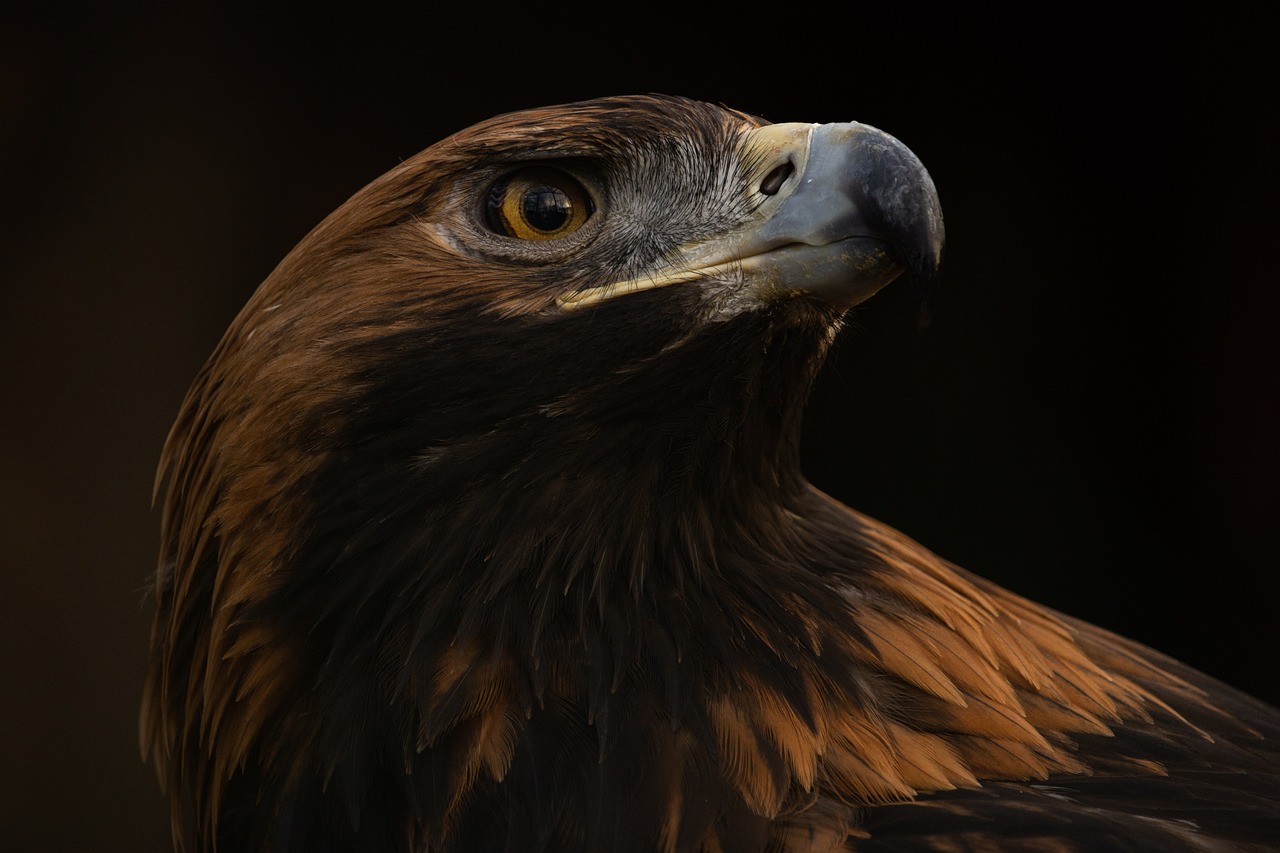
Operational Advantages in Counterinsurgency
The deployment of the MQ-1C Gray Eagle in counterinsurgency operations brings a plethora of operational advantages that can significantly enhance mission success and ensure the safety of ground troops. Imagine being on the battlefield, where every second counts, and having a silent guardian hovering above, providing real-time intelligence and support. This is precisely what the Gray Eagle offers—an eye in the sky that transforms the dynamics of modern warfare.
One of the most striking advantages of the Gray Eagle is its ability to act as a force multiplier. This means that its presence on the battlefield can amplify the effectiveness of ground forces dramatically. By delivering enhanced situational awareness, the Gray Eagle allows commanders to make informed decisions based on accurate, real-time data. With its advanced sensors and ISR capabilities, it can monitor vast areas, identify potential threats, and relay critical information back to troops on the ground. This enables forces to anticipate enemy movements and respond promptly, which can be the difference between mission success and failure.
Moreover, the Gray Eagle plays a vital role in risk mitigation for ground forces. In counterinsurgency scenarios, where the enemy might be using guerrilla tactics and hiding among civilians, the risk to soldiers is significantly heightened. However, by utilizing the Gray Eagle for surveillance and precision airstrikes, commanders can engage targets without putting their troops in harm's way. This capability not only preserves the safety of military personnel but also minimizes collateral damage, which is essential in maintaining the support of local populations.
To illustrate these advantages, consider the following table that summarizes the operational benefits of the MQ-1C Gray Eagle:
| Operational Advantage | Description |
|---|---|
| Force Multiplier | Enhances situational awareness and improves decision-making on the battlefield. |
| Risk Mitigation | Reduces the exposure of ground troops to enemy fire during operations. |
| Real-time Intelligence | Provides up-to-date information on enemy movements and activities. |
| Precision Strikes | Allows for targeted airstrikes with minimal collateral damage. |
In addition to these advantages, the Gray Eagle also fosters improved coordination among military units. With its advanced communication systems, the drone can seamlessly share information with ground troops and command centers. This interconnectedness ensures that everyone involved in the operation is on the same page, enabling a more cohesive and efficient response to threats. In essence, the Gray Eagle not only enhances the capabilities of individual units but also strengthens the overall effectiveness of the military as a whole.
In conclusion, the operational advantages of the MQ-1C Gray Eagle in counterinsurgency operations are undeniable. Its ability to provide real-time intelligence, mitigate risks, and improve coordination among forces makes it an invaluable asset on the modern battlefield. As warfare continues to evolve, the Gray Eagle stands at the forefront, shaping the future of military engagements and redefining the strategies employed in complex environments.
- What is the primary function of the MQ-1C Gray Eagle? The primary function of the MQ-1C Gray Eagle is to conduct intelligence, surveillance, and reconnaissance (ISR) missions, providing real-time data to support military operations.
- How does the Gray Eagle enhance troop safety? The Gray Eagle enhances troop safety by conducting surveillance and precision strikes remotely, reducing the need for ground forces to engage directly with the enemy.
- What are the key technologies used in the Gray Eagle? The Gray Eagle is equipped with advanced sensors, communication systems, and weaponry that enhance its operational effectiveness in counterinsurgency missions.
- Can the Gray Eagle operate in adverse weather conditions? Yes, the Gray Eagle is designed to operate in various weather conditions, making it a versatile asset in different operational environments.

Force Multiplier Effect
The MQ-1C Gray Eagle drone serves as a remarkable force multiplier in counterinsurgency operations, fundamentally altering the dynamics of modern warfare. Imagine a chess game where one player has the ability to see the entire board while the other is limited to their immediate surroundings. This is the kind of advantage the Gray Eagle provides to military forces on the ground. By offering enhanced situational awareness, it empowers commanders to make informed decisions swiftly, which is crucial in fast-paced combat scenarios.
One of the most significant aspects of the Gray Eagle's role as a force multiplier is its capacity for real-time intelligence gathering. Equipped with advanced sensors and surveillance technology, it can monitor vast areas without putting personnel at risk. This capability allows ground forces to maintain a tactical edge over insurgents who often rely on stealth and surprise to execute their operations. The drone's ability to provide continuous coverage means that potential threats can be identified and neutralized before they escalate into larger conflicts.
Furthermore, the Gray Eagle's presence on the battlefield can significantly impact troop morale. When soldiers know they have aerial support constantly watching over them, it instills a sense of security and confidence. This psychological advantage can enhance their performance, allowing them to focus on their objectives rather than worrying about hidden dangers. In essence, the Gray Eagle not only enhances operational effectiveness but also boosts the overall resilience of ground forces.
Another way the Gray Eagle acts as a force multiplier is through its ability to coordinate with other military assets. For example, it can relay information to ground troops and command centers, ensuring that everyone is on the same page. This seamless communication is vital in counterinsurgency operations, where timing and accuracy can mean the difference between success and failure. The drone's data link capabilities allow it to share critical information instantaneously, facilitating rapid response to emerging threats.
In summary, the MQ-1C Gray Eagle's role as a force multiplier is multifaceted, encompassing enhanced situational awareness, troop morale, and coordination among military assets. Its deployment in counterinsurgency operations not only amplifies the effectiveness of ground forces but also reshapes the way modern conflicts are approached. As military strategies continue to evolve, the importance of such advanced UAVs in maintaining operational superiority cannot be overstated.
- What is the primary function of the MQ-1C Gray Eagle?
The MQ-1C Gray Eagle is primarily designed for intelligence, surveillance, and reconnaissance (ISR) missions, providing real-time data to ground forces. - How does the Gray Eagle enhance situational awareness?
Equipped with advanced sensors, the Gray Eagle offers high-resolution imagery and continuous monitoring, allowing commanders to make informed decisions quickly. - Can the Gray Eagle operate in hostile environments?
Yes, the Gray Eagle is built to perform in challenging conditions, providing a crucial advantage in counterinsurgency operations. - What are some limitations of the Gray Eagle?
While the Gray Eagle is a powerful tool, it can be vulnerable to electronic warfare tactics and has significant operational costs.
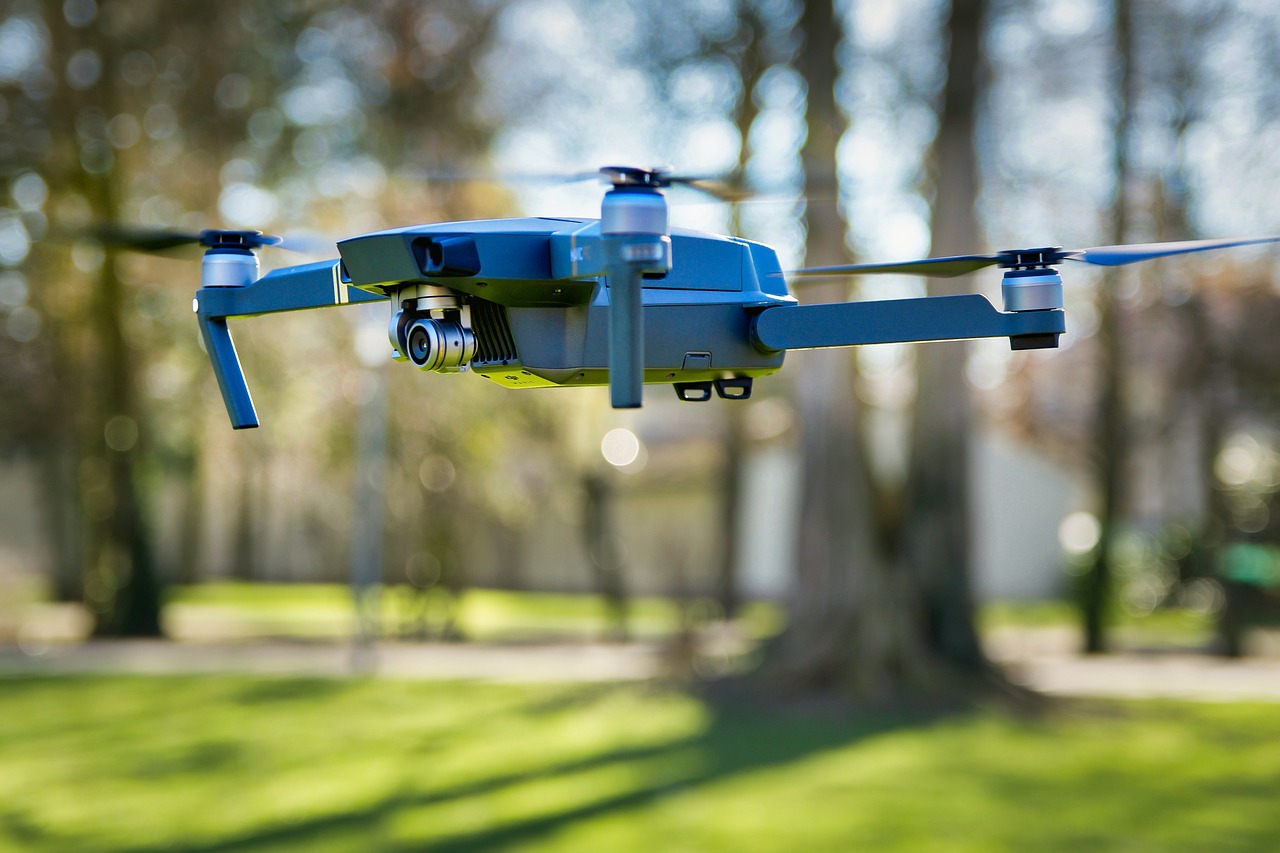
Risk Mitigation for Ground Forces
The MQ-1C Gray Eagle drone significantly enhances the safety of ground forces engaged in counterinsurgency operations. Imagine being in a hostile environment where every step could lead to danger; the Gray Eagle acts as a vigilant guardian, surveying the battlefield from above. With its advanced surveillance capabilities, it allows military personnel to gather critical intelligence without exposing themselves to direct threats. This capability is akin to having a watchful eye in the sky, providing real-time information that can be pivotal for mission success.
One of the most remarkable aspects of the Gray Eagle is its ability to conduct surveillance and airstrikes remotely. This feature not only minimizes the risk to soldiers on the ground but also enables them to engage the enemy from a safer distance. For instance, when a ground unit identifies a potential threat, the Gray Eagle can be deployed to assess the situation without putting the troops in harm's way. If necessary, it can deliver precision strikes, neutralizing threats efficiently and effectively. This capability transforms the dynamics of engagement, reducing the likelihood of casualties among ground forces.
Moreover, the Gray Eagle's continuous presence in the air serves to deter enemy actions. Knowing that they are being monitored by a sophisticated UAV can discourage insurgents from launching attacks or ambushes, as they are aware that their movements are being tracked. This psychological advantage is crucial in counterinsurgency operations, where the element of surprise can often dictate the outcome of engagements.
However, while the Gray Eagle significantly mitigates risks, it is essential to acknowledge that it is not a panacea. The effectiveness of its surveillance and strike capabilities depends on various factors, including operational planning and the integration of intelligence from multiple sources. Ground forces must maintain communication with the Gray Eagle operators to ensure that the drone's capabilities are fully utilized. This collaboration between air and ground units is vital for maximizing the advantages offered by the UAV.
In summary, the MQ-1C Gray Eagle plays a crucial role in risk mitigation for ground forces during counterinsurgency operations. By providing enhanced situational awareness, conducting remote surveillance, and delivering precision strikes, it allows military personnel to operate more safely and effectively in hostile environments. The integration of this technology into modern warfare not only protects lives but also enhances the overall effectiveness of military operations.
- What is the primary function of the MQ-1C Gray Eagle?
The primary function of the MQ-1C Gray Eagle is to conduct intelligence, surveillance, and reconnaissance (ISR) missions while also being capable of carrying out precision strikes. - How does the Gray Eagle enhance the safety of ground forces?
By providing real-time surveillance and the ability to engage threats from a distance, the Gray Eagle reduces the exposure of ground troops to direct enemy fire. - Can the Gray Eagle operate in adverse weather conditions?
Yes, the MQ-1C Gray Eagle is designed to operate in various weather conditions, allowing it to maintain operational effectiveness even in challenging environments. - What are the limitations of the Gray Eagle in counterinsurgency operations?
While the Gray Eagle is highly effective, it can be vulnerable to electronic warfare tactics and requires significant operational costs and maintenance.
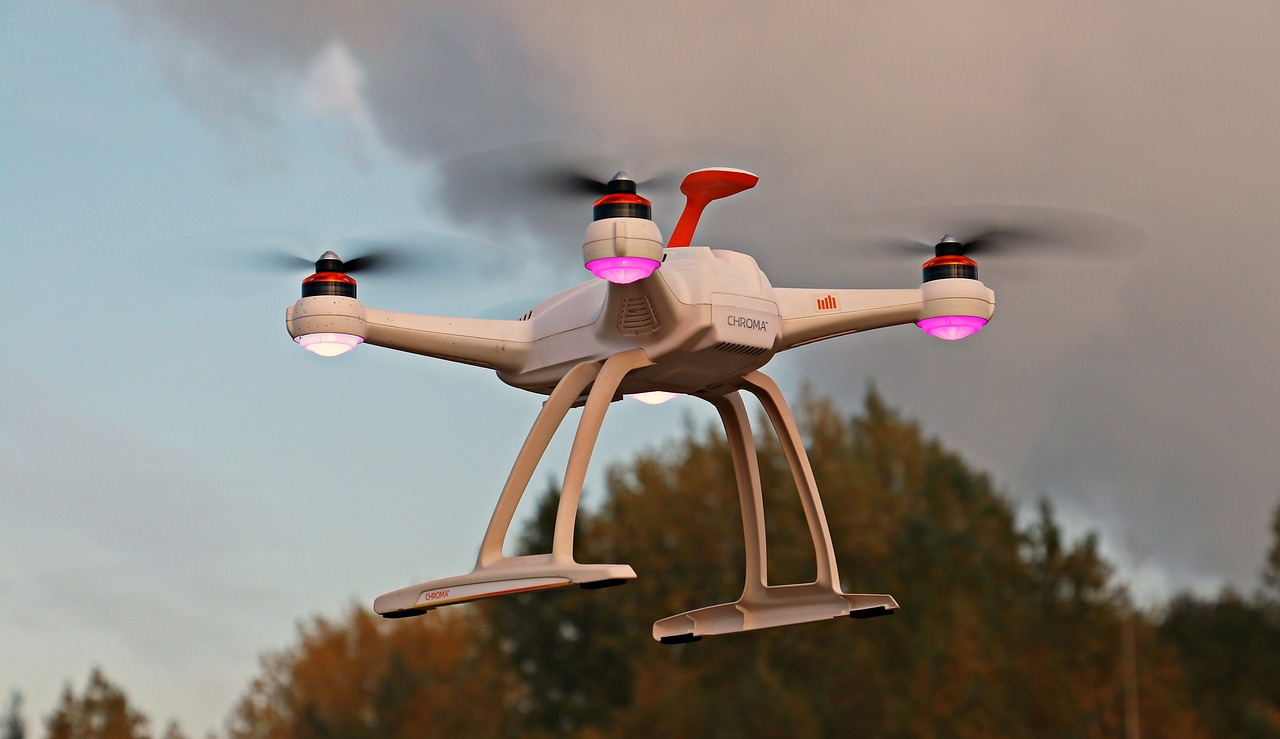
Challenges and Limitations
While the MQ-1C Gray Eagle has made significant strides in enhancing counterinsurgency operations, it is not without its challenges and limitations. One of the most pressing issues is its vulnerability to electronic warfare. As technology advances, so do the tactics employed by adversaries. Insurgents and hostile forces are increasingly utilizing electronic warfare strategies to disrupt UAV operations. This includes jamming communication signals, which can lead to loss of control or degradation of data transmission. The implications of such vulnerabilities are profound, as they not only jeopardize mission success but also put valuable resources at risk.
Moreover, the operational costs and maintenance of the Gray Eagle are substantial. While the initial investment in UAV technology can be justified by its capabilities, the ongoing expenses associated with maintenance, training, and operational readiness can strain military budgets. For instance, the cost of a single MQ-1C Gray Eagle can exceed several million dollars, and the expenses do not stop there. The need for specialized personnel to operate and maintain these systems adds another layer of financial commitment. In a world where budgets are often tight, these factors can limit the frequency and scale of operations.
Despite its advanced features, the Gray Eagle also faces limitations in terms of operational range and endurance. While it boasts impressive flight times, factors such as weather conditions and the need for refueling can affect its operational capabilities. For example, adverse weather can limit its ability to conduct surveillance or engage targets effectively. Additionally, the reliance on satellite communications can pose challenges in environments where satellite coverage is limited or compromised. These constraints can hinder the effectiveness of the Gray Eagle in certain counterinsurgency scenarios, where flexibility and adaptability are crucial.
Furthermore, the integration of the Gray Eagle into existing military operations can be complex. Coordinating between UAV operators, ground troops, and command centers requires a high level of communication and situational awareness. Any breakdown in this coordination can lead to miscommunication and potentially dangerous situations on the battlefield. The learning curve for personnel to effectively use this technology can also be steep, necessitating extensive training and experience.
In summary, while the MQ-1C Gray Eagle represents a significant advancement in counterinsurgency capabilities, it is essential to recognize and address its challenges and limitations. From vulnerabilities to electronic warfare and operational costs to integration complexities, these factors must be carefully considered to maximize the effectiveness of this UAV in modern warfare.
- What are the primary challenges faced by the MQ-1C Gray Eagle?
The Gray Eagle faces challenges such as vulnerability to electronic warfare, high operational costs, and limitations in operational range and endurance. - How does electronic warfare impact the Gray Eagle's missions?
Electronic warfare tactics can disrupt the communication signals of the Gray Eagle, potentially leading to loss of control and mission failure. - What are the financial implications of deploying the Gray Eagle?
The costs associated with purchasing, maintaining, and operating the Gray Eagle can be significant, impacting military budgets. - Can the Gray Eagle operate effectively in adverse weather conditions?
While it has impressive capabilities, adverse weather can limit its surveillance and engagement effectiveness. - How important is coordination in using the Gray Eagle?
Effective coordination between UAV operators, ground troops, and command centers is crucial to avoid miscommunication and ensure mission success.
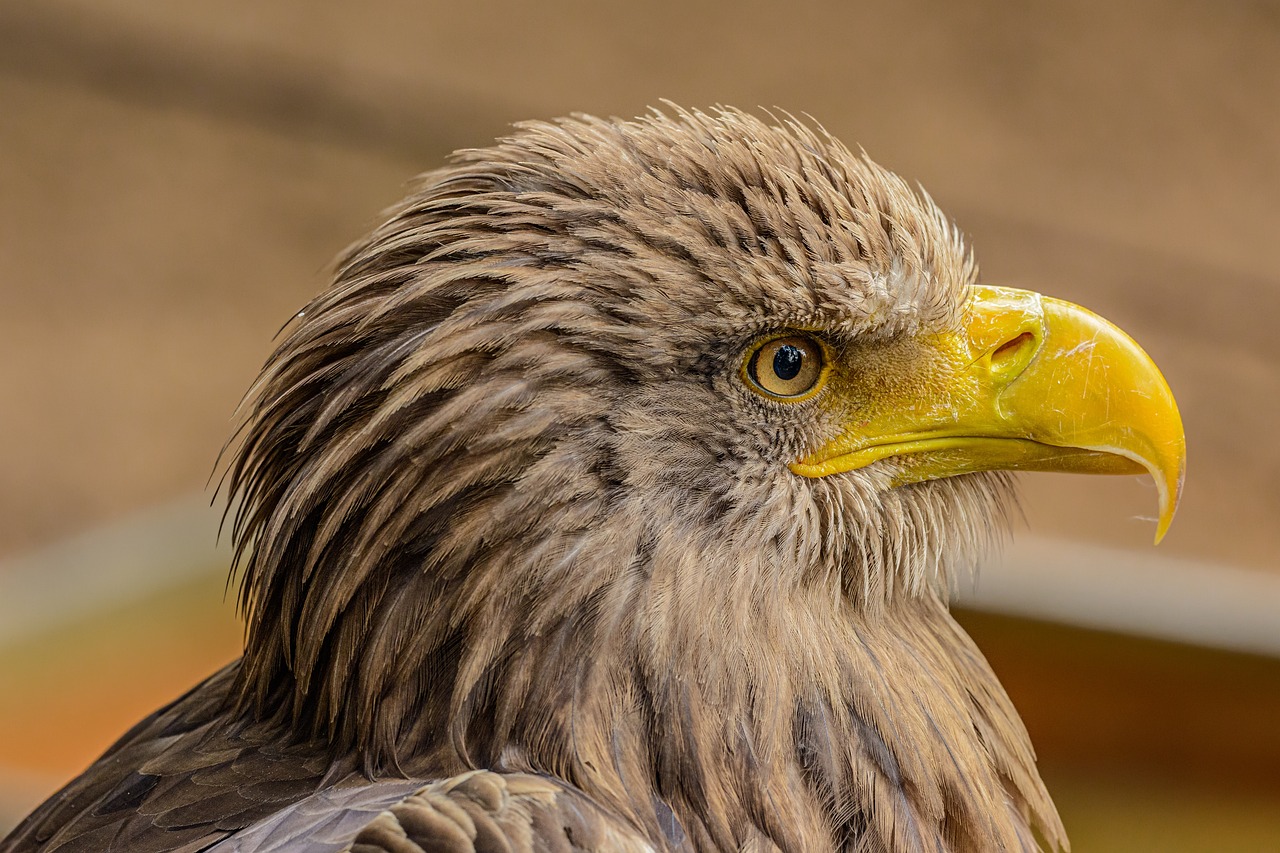
Vulnerability to Electronic Warfare
The MQ-1C Gray Eagle, while a formidable asset in counterinsurgency operations, is not without its vulnerabilities. One of the most significant threats it faces comes from electronic warfare (EW) tactics employed by adversaries. These tactics can disrupt, deceive, or even disable the drone's systems, thereby compromising its operational effectiveness. Imagine the Gray Eagle as a sleek bird soaring through the skies; however, when faced with the right kind of interference, it can become disoriented and struggle to find its way home.
Electronic warfare can take various forms, including jamming communications, spoofing GPS signals, and hacking into control systems. Each of these tactics can severely limit the Gray Eagle's capabilities. For instance, if an enemy successfully jams the drone's communication link, it could lead to a loss of real-time data transmission, rendering the UAV unable to relay critical information back to command centers. This situation can create a significant gap in situational awareness for ground troops, who rely heavily on the drone's intelligence for informed decision-making.
Moreover, the implications of these vulnerabilities extend beyond just the Gray Eagle itself. The reliance on advanced technology in modern warfare means that a successful electronic attack can disrupt entire operations. To illustrate this, consider the following potential impacts:
- Loss of Control: If the Gray Eagle is hacked or jammed, operators may lose control over critical maneuvers, effectively rendering the UAV useless in the field.
- Data Integrity Issues: Electronic interference can lead to corrupted data, which might mislead commanders and ground forces.
- Increased Risk to Ground Forces: Without the support of the Gray Eagle, ground troops may find themselves exposed to enemy fire, increasing the risk of casualties.
In response to these vulnerabilities, military strategists are continually working to enhance the resilience of the Gray Eagle against electronic warfare. This includes developing countermeasures, improving encryption protocols, and integrating more robust communication systems. However, as technology evolves, so do the tactics employed by adversaries, creating a constant game of cat and mouse.
Ultimately, while the MQ-1C Gray Eagle remains an invaluable tool in counterinsurgency operations, understanding and addressing its vulnerabilities to electronic warfare is crucial for maintaining its effectiveness on the battlefield. As military operations become increasingly reliant on technology, ensuring the security and reliability of systems like the Gray Eagle will be paramount in achieving mission success.
- What is electronic warfare? Electronic warfare refers to military actions that use electromagnetic energy to control the electromagnetic spectrum or to attack an enemy.
- How does electronic warfare affect drones like the Gray Eagle? Electronic warfare can disrupt communication, navigation, and control systems of drones, potentially rendering them ineffective.
- What measures are taken to protect the Gray Eagle from electronic warfare? The military is developing advanced countermeasures, improving encryption, and enhancing communication systems to protect against electronic threats.

Operational Costs and Maintenance
The operational costs and maintenance of the MQ-1C Gray Eagle are significant considerations for military planners. While the drone offers advanced capabilities that can enhance mission success, the financial implications cannot be overlooked. The costs associated with deploying and maintaining the Gray Eagle can be broken down into several key categories, including fuel, personnel, and maintenance. Each of these aspects plays a crucial role in determining the overall budget required for effective operations.
First, let's talk about fuel costs. The MQ-1C Gray Eagle has a range of approximately 3,600 nautical miles, which allows it to conduct long-duration missions. However, this capability comes at a price. Fuel consumption can be substantial, especially during extended operations. For instance, the operational cost per flight hour can vary significantly based on mission profile and environmental conditions. On average, it can range from $1,000 to $3,000, depending on the specific mission requirements.
Next, we need to consider the personnel costs. Operating the Gray Eagle requires a skilled team, including pilots, sensor operators, and maintenance personnel. Each of these roles is critical for ensuring that the UAV operates effectively and safely. The cost of training these personnel can be quite high, as it involves extensive education and practice to ensure they are prepared for real-world scenarios. Moreover, ongoing training is necessary to keep skills sharp and to stay updated with the latest technologies and tactics.
Maintenance is another crucial aspect of operational costs. The Gray Eagle is a sophisticated piece of technology that demands regular upkeep to ensure optimal performance. This includes routine inspections, repairs, and potential upgrades to its systems. The maintenance costs can accumulate quickly, particularly if the UAV is deployed in challenging environments where wear and tear are more pronounced. For instance, the average annual maintenance cost can be in the range of $500,000 to $1 million, depending on the frequency of use and operational conditions.
To better illustrate these costs, here's a summary table:
| Cost Category | Estimated Cost |
|---|---|
| Fuel Costs per Flight Hour | $1,000 - $3,000 |
| Annual Maintenance Costs | $500,000 - $1 million |
| Personnel Training Costs | Varies (High Initial Investment) |
In conclusion, while the MQ-1C Gray Eagle provides unmatched capabilities in counterinsurgency operations, it is essential to recognize the operational costs and maintenance challenges associated with its deployment. Understanding these financial implications allows military planners to make informed decisions about resource allocation and mission planning. Balancing the benefits of advanced UAV technology with its costs is crucial for maintaining operational effectiveness in modern warfare.
- What is the primary role of the MQ-1C Gray Eagle? The MQ-1C Gray Eagle is primarily used for intelligence, surveillance, and reconnaissance (ISR) missions, as well as targeted strikes in counterinsurgency operations.
- How does the Gray Eagle enhance situational awareness? The Gray Eagle's advanced sensor systems provide real-time data collection and high-resolution imagery, allowing commanders to make informed decisions on the battlefield.
- What are the main challenges faced by the Gray Eagle? Key challenges include vulnerability to electronic warfare, high operational costs, and maintenance requirements.
- How does the Gray Eagle contribute to troop safety? By conducting surveillance and airstrikes remotely, the Gray Eagle reduces risks for ground forces, allowing for safer engagements in hostile environments.
Frequently Asked Questions
- What is the MQ-1C Gray Eagle?
The MQ-1C Gray Eagle is an advanced unmanned aerial vehicle (UAV) designed primarily for intelligence, surveillance, and reconnaissance (ISR) missions. It's equipped with sophisticated technology that allows it to gather real-time data and support ground operations effectively.
- What are the key features of the Gray Eagle?
The Gray Eagle boasts several key features, including advanced sensor systems for high-resolution imagery, robust communication technologies for seamless data sharing, and versatile weapon systems that can engage targets effectively in counterinsurgency operations.
- How does the Gray Eagle enhance situational awareness?
The Gray Eagle enhances situational awareness by providing a bird's-eye view of the battlefield. Its ISR capabilities allow for real-time data collection, which helps commanders make informed decisions and improves coordination among ground troops.
- What are the operational advantages of using the Gray Eagle?
Using the MQ-1C Gray Eagle offers significant operational advantages, such as acting as a force multiplier by enhancing situational awareness and reducing risks for ground forces. It allows for safer engagements in hostile environments by conducting surveillance and airstrikes remotely.
- What challenges does the Gray Eagle face in operations?
Despite its advantages, the Gray Eagle faces challenges such as vulnerability to electronic warfare tactics, which can disrupt its operations. Additionally, the operational costs and maintenance requirements can be significant, impacting overall mission planning.
- How does the Gray Eagle contribute to counterinsurgency missions?
The Gray Eagle contributes to counterinsurgency missions by providing critical ISR capabilities, enabling precise targeting of insurgent threats, and ensuring better safety for ground troops. Its advanced technologies help in adapting to the complex dynamics of asymmetric warfare.



